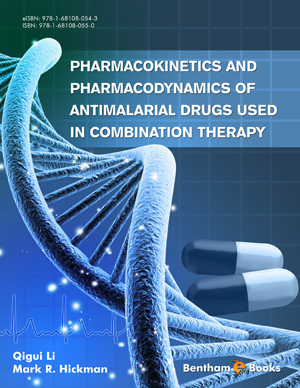Abstract
Antimalarial drug treatment failures are often not fully investigated, and determining why a patient failed therapy requires not only examining the possibilities of infection with a drug resistant parasite, but also determining drug levels in these patients. Determining drug levels at the point of malaria treatment failure provides useful data even though this is not a routine element of routine patient care or even. Any clinical symptoms or signs at this time should be noted as well given the patient’s illness which in and of itself may affect PK parameters, particularly the volume of distribution. Comparison of PK parameters at the time of late parasitological and clinical failure can be used to assess the impact of illness. In this chapter, the PK/PD parameters of artemisinin compounds will be reviewed. Although the body of literature describing the PK/PD of artemisinin agents is quite limited, the available literature on PK/PD evaluations of artemisinin drugs in man is reviewed in this chapter particularly artemisinin drugs administered in a similar manner as monotherapy. The PK/PD results for administration of artemisinin monotherapy may actually provide greater information than other studies of artemisinin dosage regimens. The PK/PD analysis of artesunate and other artemisinin drugs administered by intravenous, oral, and intramuscular regimens are discussed and derived from combined data with the same drug and dosage regimens. Detailed PK/PD evaluations have demonstrated that artesunate has superior PK/PD behavior among artemisinin derivatives. Among ACT combination drugs, the combination of dihydroartemisinin- piperaquine (DP) has demonstrated superior PK/PD qualities compared to all other ACTs recommended by WHO.
Keywords: ACTs, artemisinin derivatives, artesunate, cure, dihydroartemisininpiperaquine, drug concentration, intramuscular, intravenous, oral, parasitemia, pharmacokinetics and pharmacodynamics (PK/PD), resistance, treatment failure.






















